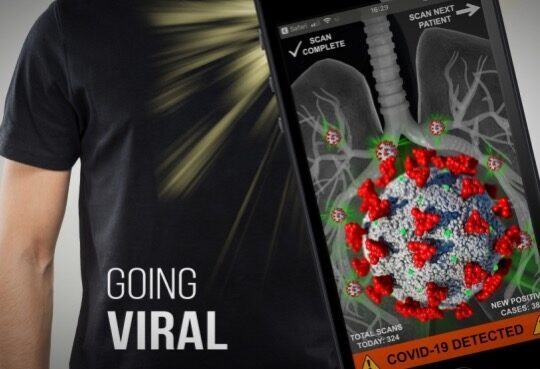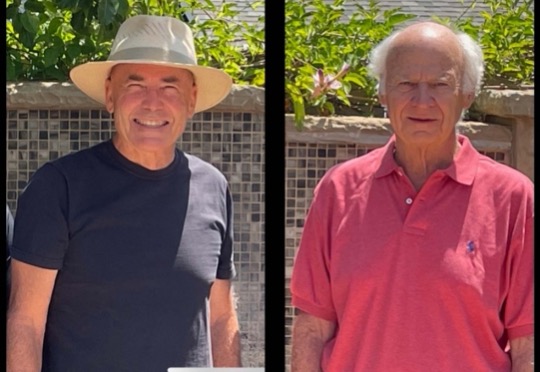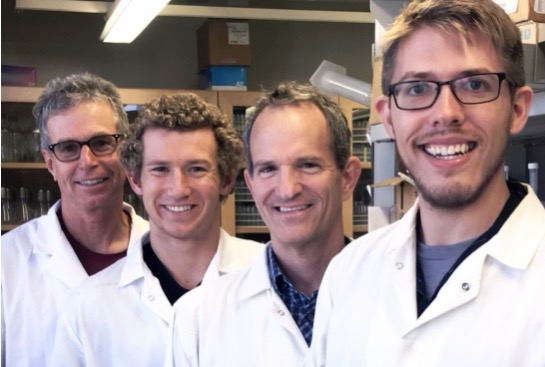By Sonia Fernandez. In a potential game changer for COVID-19 pandemic control efforts, a new cell phone app and lab kit have transformed a smartphone into a COVID-19/flu detection system. The detection system is among the most rapid, sensitive, affordable and scalable tests known — and can be readily adapted for other pathogens with pandemic potential including deadly variants of COVID and flu. It also provides a platform for inexpensive home-based testing.
Developed by a research team of UC Santa Barbara scientists and Santa Barbara Cottage Hospital scientists and physicians, the smartphone study was published in the journal JAMA Network Open. The system succeeded in achieving rapid and accurate diagnosis of COVID-19, COVID variants, and flu viruses. The app uses a smartphone’s camera to measure a chemical reaction and determines a diagnosis in 25 minutes — at a fraction of the cost of current diagnostic methods. The app and methodology are free and openly available to all.
The project was led by professors Michael Mahan, David Low and Charles Samuel of UC Santa Barbara, along with Santa Barbara Cottage Hospital physicians Jeffrey Fried, M.D. and Lynn Fitzgibbons, M.D. Additional collaborators include UCSB scientists Douglas Heithoff, Lucien Barnes, Scott Mahan and Gary Fox — as well as Santa BarbaraCottage Hospital physicians Katherine Arn, M.D., Andrew Bishop, M.D., and Sarah Ettinger, M.D.
“As new COVID variants emerge globally, testing and detection remain essential to pandemic control efforts,” lead author Michael Mahan said. “Nearly half the world’s population has a smartphone, and we believe that this holds exciting potential to provide fair and equal access to precision diagnostic medicine.”
The collaboration was launched to develop rapid, low-cost diagnostics that can be used by healthcare providers anywhere in the world to diagnose COVID-19. The lab kit can be produced for less than $100, and it requires little more than a smartphone, a hot plate and LED lights. The screening tests can be run for less than $7 each versus $10 to $20 per rapid antigen test and $100 to $150 per PCR test.
The process, termed smaRT-LAMP, is simple and straightforward. A small volume of the patient’s saliva is collected and analyzed by the smartphone app using the phone’s camera and the diagnostic kit. No additional specialty materials are required.
PCR tests are the gold standard due to their sensitivity and accuracy, but they are slow, expensive and not portable. LAMP tests match the sensitivity and accuracy of PCR — at a fraction of the time and cost. Further, LAMP occurs at constant temperature, which is suitable for point-of-care and home-based testing.
“The key finding was solving the LAMP ‘primer-dimer’ problem — false positives due to high sensitivity — which scientists have struggled with for more than 20 years,” Heithoff explained. “It took more than 500 attempts to solve it for COVID-19, after which flu viruses were detected on the very first try.”
The simple lab test can detect and differentiate COVID-19 and the flu, which show very similar respiratory disease symptoms and can lead to misdiagnosis.
“SmaRT-LAMP can detect COVID-19 and can be readily modified to detect novel CoV-2 variants and other pathogens with pandemic potential, including influenza,” Samuel said.
“We hope technologies like this offer new ways of bringing state-of-the-art diagnostics to underserved and vulnerable populations,” Low explained.
The free, custom-built app was developed for the Android operating system and can be downloaded and installed from the Google Play Store. Upon opening the app, the user is presented with an option for a step-by-step tutorial prior to running test samples.
“Rapid and affordable point of care testing is critically important for underserved communities around the world, many of which are struggling with inadequate diagnostic testing access and limited laboratory infrastructure,” explained Dr. Fitzgibbons, an infectious disease physician.
“Such early detection and quarantine can also reduce the risk of future global outbreaks,” added Dr. Fried, a critical care physician.
This research was funded by grants from the National Institutes of Health’s National Heart, Lung, and Blood Institute, Santa Barbara Cottage Hospital, and U.S. Army Combat Capabilities Development Command’s Army Research Laboratory via the Institute for Collaborative Biotechnologies cooperative agreement and contract.
Study title: “Assessment of a Smartphone-based Loop-mediated Isothermal Amplification Assay for Detection of SARS-CoV-2 and Influenza Viruses”
Read more about the research in this article by Forbes: https://www.forbes.com/sites/judystone/2022/01/28/smartphone-and-spit-a-…
This article originally appeared in The UCSB Current, January 28, 2022, and is re-posted with permission in the UC IT Blog.




Please provide a timeline for availability of this app on iPhones.